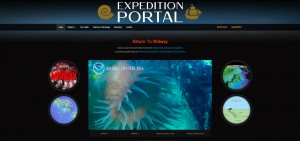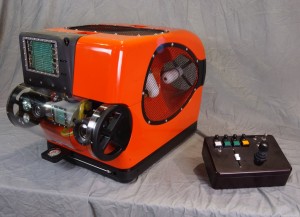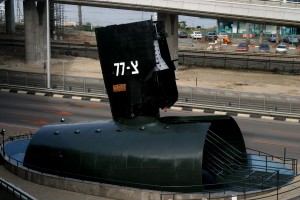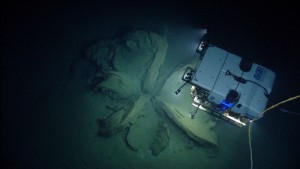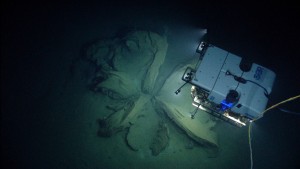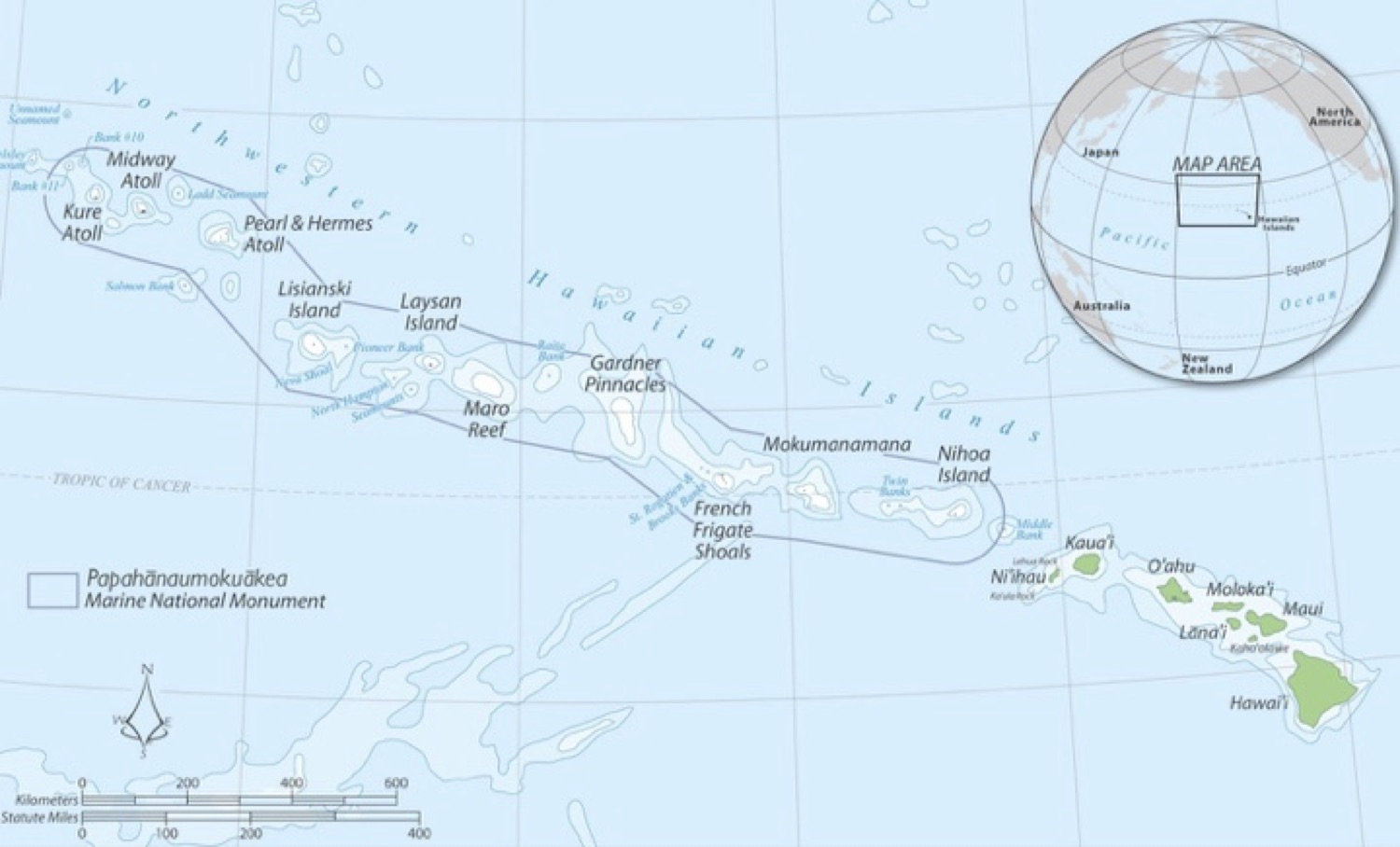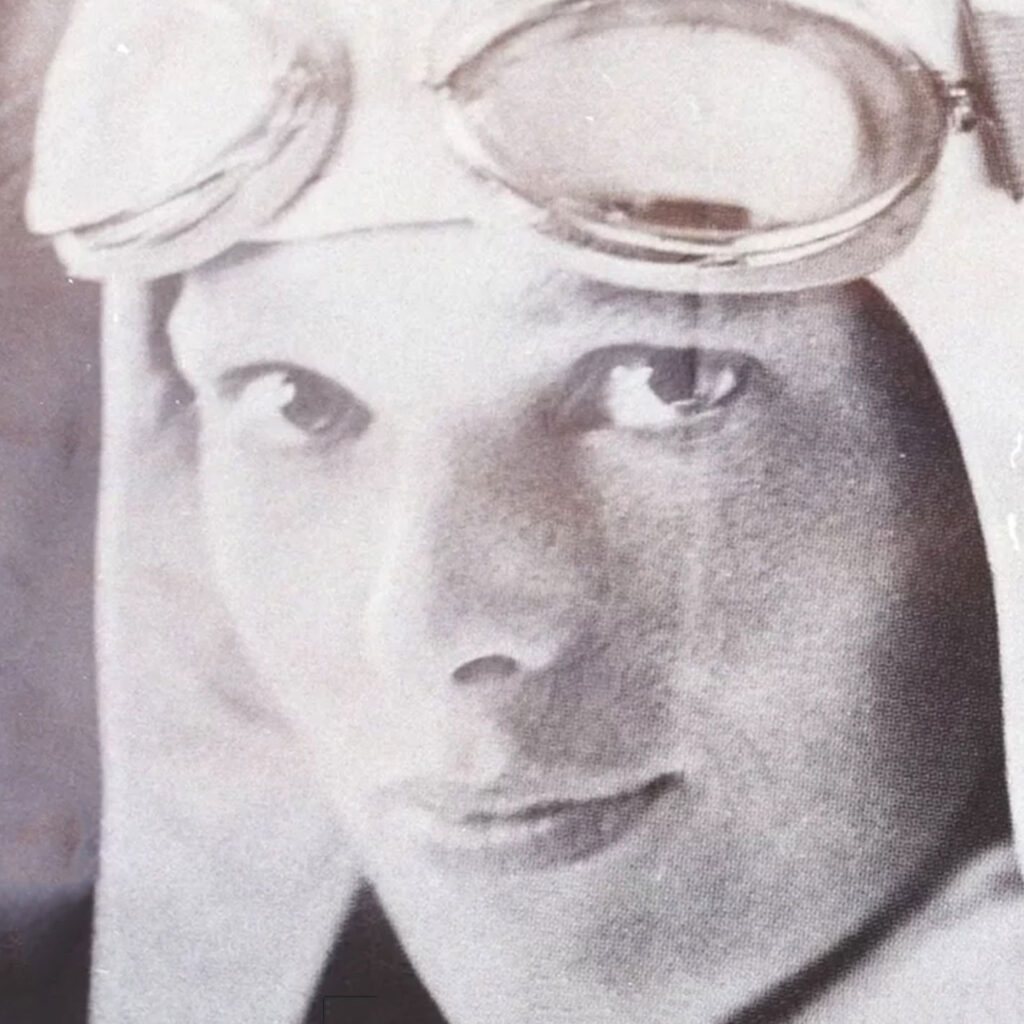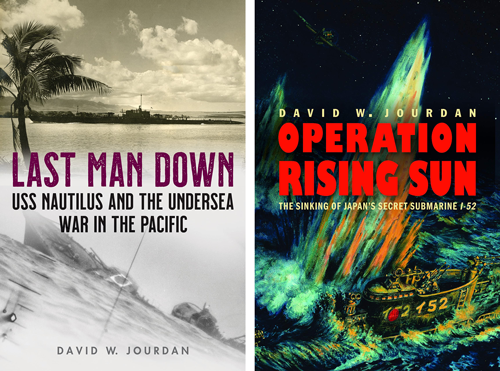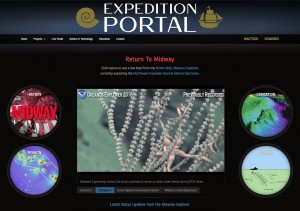 The NOAA Okeanos Explorer is currently at sea mapping and imaging sites from Necker Ridge to French Frigate Shoals in the Northwest Hawaiian Islands chain. Spectacular images from the seafloor have been collected, as well as rock and biological samples. As of February 29, the vessel is dealing with very bad weather and has cancelled the day’s dive. However, one can see replays of earlier dives and follow developing events live though our new Expedition Portal. This site has been launched to support educational outreach and general public interest in undersea exploration as we plan dives on the site of the Battle of Midway on March 5 and 6. Besides the live feeds, one can explore the history of the battle, view images of prior expeditions, learn about the science and technology of deep sea research. Educational materials and mission updates will be added over the course of the expedition.
The NOAA Okeanos Explorer is currently at sea mapping and imaging sites from Necker Ridge to French Frigate Shoals in the Northwest Hawaiian Islands chain. Spectacular images from the seafloor have been collected, as well as rock and biological samples. As of February 29, the vessel is dealing with very bad weather and has cancelled the day’s dive. However, one can see replays of earlier dives and follow developing events live though our new Expedition Portal. This site has been launched to support educational outreach and general public interest in undersea exploration as we plan dives on the site of the Battle of Midway on March 5 and 6. Besides the live feeds, one can explore the history of the battle, view images of prior expeditions, learn about the science and technology of deep sea research. Educational materials and mission updates will be added over the course of the expedition.
Click on the image to launch the Portal. Check out Camera 1 and 2 to see what is happening and replays of earlier ROV dives. Select “Where is the Okeanos” to see where the vessel is and has been. Dive into the Portal windows to learn more. Keep checking as we upload new content during the expedition. And share the link with anyone interested in exploration!
This Portal was made possible by the generous support of Collins Aerospace and the SeaWord Foundation.

